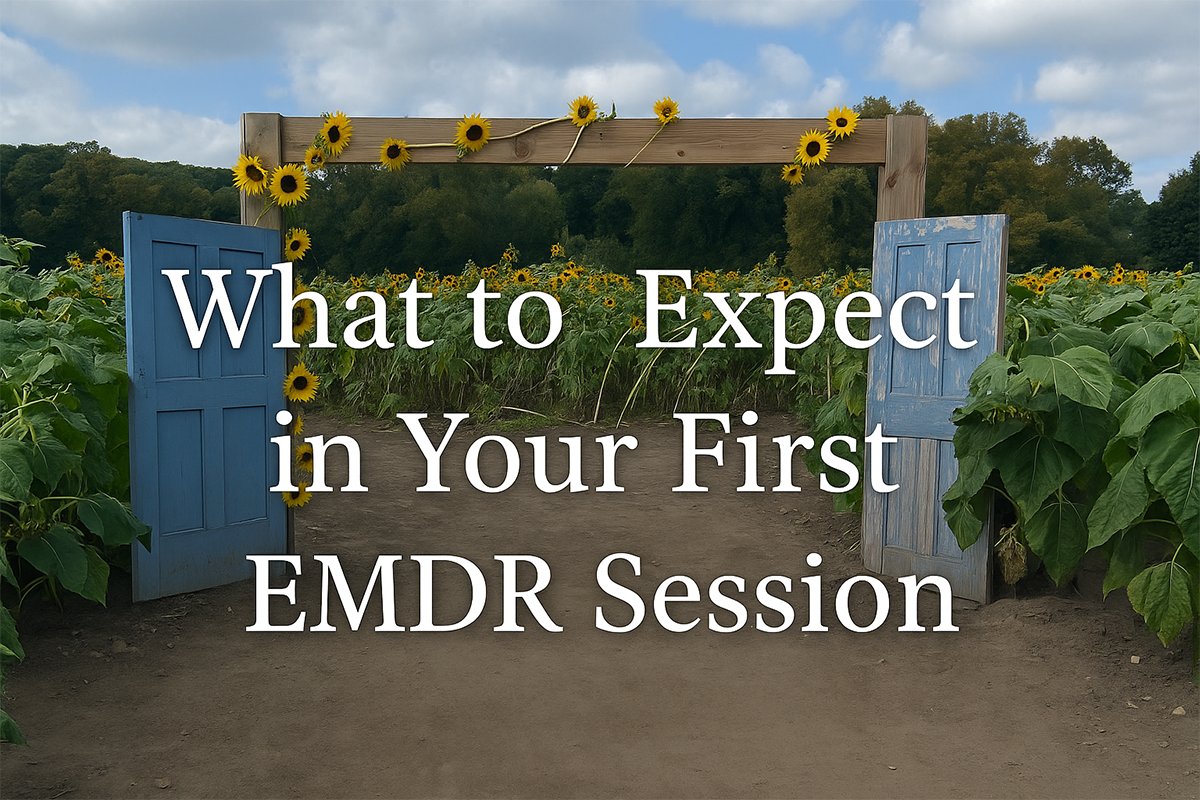 If you’ve been considering therapy for trauma, anxiety, or painful memories, you may have come across EMDR (Eye Movement Desensitization and Reprocessing) therapy. It works differently than traditional talk therapy—helping your brain reprocess stuck memories so you can heal without reliving every detail.
If you’ve been considering therapy for trauma, anxiety, or painful memories, you may have come across EMDR (Eye Movement Desensitization and Reprocessing) therapy. It works differently than traditional talk therapy—helping your brain reprocess stuck memories so you can heal without reliving every detail.
Many people in Connecticut look for EMDR therapy when they’re ready to move past trauma, anxiety, or PTSD. Whether you’re seeking therapy in person or online, understanding what the first session looks like can help ease nerves and prepare you for the process.
Step 1: Building Safety and Trust
Your EMDR therapist won’t dive right into trauma memories. The first session is about getting to know you, your history, and your goals for therapy. You’ll talk about what brought you in, what you’d like to feel different in your life, and what support systems you have.
Step 2: Learning How EMDR Works
Your therapist will explain the basics of EMDR:
– Bilateral stimulation (BLS): This could be following lights with your eyes, holding tappers that buzz, or hearing tones that alternate left and right.
– Why it works: EMDR helps the brain get “unstuck” from old patterns and reprocess the memory so it feels less distressing over time.
– What it feels like: Many clients describe it as a mix between recalling a memory and noticing how their body reacts, while gently following the BLS.
This education piece helps you feel less intimidated and more in control of the process.
Step 3: Preparing for Reprocessing
Before targeting a painful memory, your therapist may help you:
– Identify a safe or calming image you can return to anytime.
– Notice how distress shows up in your body (tension, tightness, racing thoughts).
– Rate your distress using a simple scale (often called the SUD scale: Subjective Units of Disturbance).
You may not process a major trauma memory in the very first session. Often, therapists spend time ensuring you feel stable before beginning deeper work.
Step 4: A Gentle First Experience
If you’re ready, your therapist may guide you through processing a smaller memory or distressing moment. The goal isn’t to erase it—it’s to help your brain file it away as “in the past” instead of “still happening.” Clients often notice that the memory feels less vivid, less painful, and more manageable afterward.
Step 5: Closing and Next Steps
At the end of your session, your therapist will check in with you:
– Do you feel grounded?
– Do you need help calming your nervous system?
– Are there lingering emotions to note for next time?
You’ll also talk about what to expect between sessions. Some clients feel tired, others feel lighter, and some notice dreams or insights popping up. All of these are normal signs that your brain is working through the healing process.
Final Thoughts
Your first EMDR therapy session is less about “fixing everything” and more about building a safe foundation. You and your therapist will spend time exploring your history, clarifying what you’d like to work on, and making sure you understand the process before going deeper. By the time you leave, you’ll have a clearer sense of how EMDR works, what to expect in future sessions, and a plan for moving forward.
Healing with EMDR doesn’t mean forgetting—it means being able to remember without reliving.
✨ Looking for EMDR therapy in Connecticut? I offer online trauma therapy for adults across Connecticut. Contact me at taratherapyct@gmail.com | (203) 871-1540 to schedule a consultation and take the first step toward healing.
 Tara is a licensed professional counselor, licensed alcohol and drug counselor and certified yoga teacher. She has worked in behavioral health for over 20 years and currently has a private practice in West Hartford, CT. Her writing has been featured in Wallingford Connecticut Magazine, she is a contributing writer on practiceofthepractice.com and she is a regular contributing guest on Radio 103.5FM WNHH “The Culture Cocktail Hour”. Having learned from personal experience she is passionate about helping women heal from the past and embrace their future. To find out more about Tara visit:
Tara is a licensed professional counselor, licensed alcohol and drug counselor and certified yoga teacher. She has worked in behavioral health for over 20 years and currently has a private practice in West Hartford, CT. Her writing has been featured in Wallingford Connecticut Magazine, she is a contributing writer on practiceofthepractice.com and she is a regular contributing guest on Radio 103.5FM WNHH “The Culture Cocktail Hour”. Having learned from personal experience she is passionate about helping women heal from the past and embrace their future. To find out more about Tara visit:
